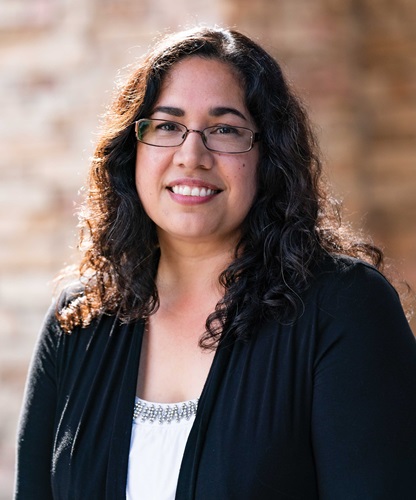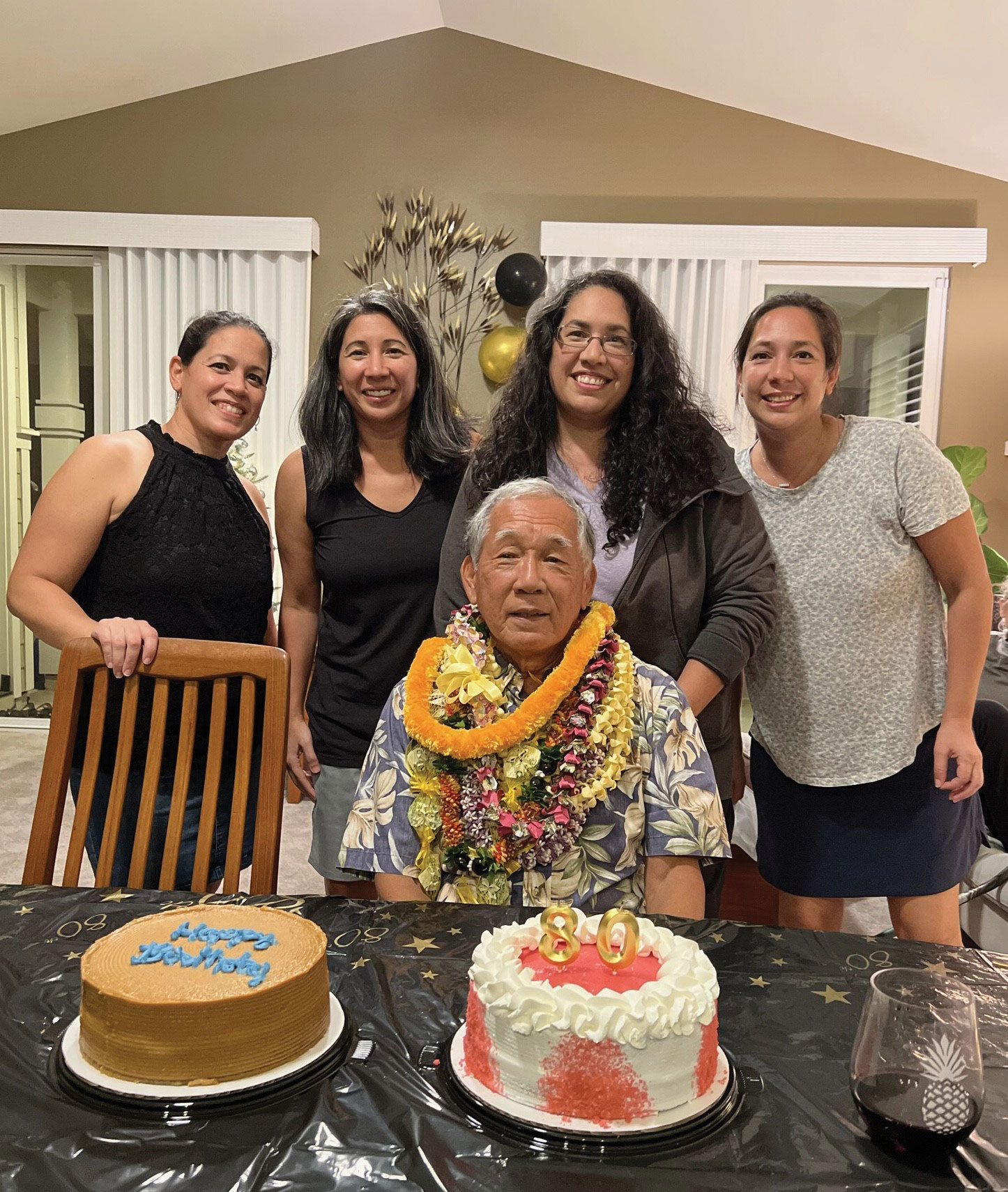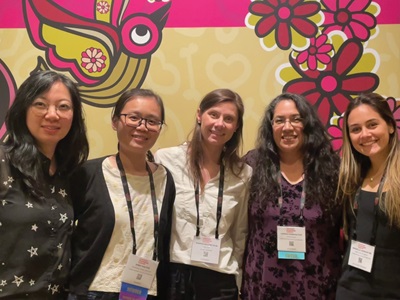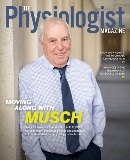Detective Work
Larissa Shimoda’s lifelong curiosity about how the body works has shaped her into a research scientist focused on solving cellular mysteries.
By Meredith Sell

When Larissa Shimoda, PhD, leaves Johns Hopkins University after work, she drives through the streets of Baltimore, hops on the freeway and points her headlights toward the country. “As I’m driving home, everything gets quieter,” the professor of medicine says. Outside, birds and frogs replace traffic and sirens as the dominant noise-makers. Twenty-five minutes later, she pulls into her driveway. She greets her husband and three dogs. It’s good to be home.
Home is where Shimoda’s interest in science and the human body began. Growing up in Seattle, where her father worked as an electrical engineer for Boeing and her mother volunteered as a school nurse, Shimoda remembers playing doctor with her three younger sisters. At age 5, her favorite TV show was “Emergency!,” a medical drama that put the spotlight on paramedics. Her mom owned a collection of “Cherry Ames, Student Nurse” books—a medical mystery series in the vein of “Nancy Drew”—and 8-year-old Shimoda read them voraciously. The combination of human health, mystery-solving and plucky main character held her in rapt attention and stirred her growing curiosity in physiology.
“I was more and more interested about the body and how things worked: How do you see? How does that get into your brain?” Shimoda remembers. She’d ask her mother these questions and receive partial answers, but she always wanted to know more.
Research Questions
Her undergraduate studies at Marquette University in Milwaukee gave Shimoda the opportunity to finally figure things out. At least, that’s what she thought. She wanted to eventually do medical research, so she declared a major in biomedical engineering, thinking the track would cover areas such as genetic engineering. But then she found herself in physics and calculus classes, learning how to build circuits.
“I spent the first two years hating everything I was doing,” she says. “I couldn’t see how all of that was going to help me do the research I wanted to do.” She called her parents and tried to convince them to let her drop out and go to art school instead. “They convinced me to stick it out.”
“Nature’s not dumb, so if it can take a protein and have it have one function, why not build in a couple other functions to get more bang for your buck? That’s been fun [to try] to unravel.”
Good thing, too, because her junior year everything changed, and it only took one class. The professor gave an assignment to find and report on a scientific paper that used an engineering approach to solve a medical problem. Shimoda went to the library
and flipped through the “Index Medicus,” a massive reference book that listed published journal articles. Eventually, she found a paper that looked at how to address phenylketonuria patients’ lack of a certain enzyme by designing
artificial lipid vessels that would protect the enzyme in the bloodstream so it wouldn’t be destroyed as a foreign entity.

“[The authors] went through the process of how they figured out what the [vessel] composition should be and what the pore size should be and how to calculate it—and I just thought that was the coolest thing,” Shimoda says. “Everything clicked. I started going back to class. My grades, the trajectory, changed dramatically.”
That was just the beginning of her evolution. In her master’s studies, also in biomedical engineering, she started working with a neonatologist in the lab, looking at blood vessel constriction and dilation.
“In preterm infants, cerebral hemorrhage, at the time, was a pretty significant problem,” Shimoda says, “so [the neonatologist] was trying to understand the regulation of these blood vessels.”
Shimoda helped by building an electronic system to control pressure and flow in a blood vessel. She set it up with piglet cerebral vessels, which are comparable to human infant vessels. “I was taking these little blood vessels and I was increasing flow and decreasing flow and looking to see how much they dilate or constrict. And could I figure out which mechanisms were controlling that?” she says.
This project continued into Shimoda’s PhD work, where she transitioned from building the electronic system to testing it and calculating what was happening in terms of stress and pressure. But she noticed that she was more interested in why the blood vessels responded the way they did than she was in figuring out the best engineered technology. The research team projected the blood vessels onto a video screen so they could watch them contracting and relaxing in real time. What she saw fascinated her.
She thought: How does this happen in the blood vessel? What are the cells doing? How does the blood vessel control flow? What does this do in the brain? What does it do in the lung with pulmonary vessels? How does that lead to disease? How can we interfere so you don’t get disease? Her inquisitive nature perked up, and the questions, the mysteries, seemed endless.
Finding Answers

After finishing her PhD in 1995, Shimoda left Marquette for a three-year training program at Johns Hopkins in pulmonary medicine and pulmonary physiology. “I was excited to learn more about the lung and explore pulmonary physiology,” she says. “I learned how to perform an isolated lung perfusion, which we still do … and then learned some of the more cell-based models, which I hadn’t been as familiar with.”
Toward the end of her fellowship and early in her work as a faculty member at Johns Hopkins, Shimoda collaborated with Gregg Semenza, MD, PhD, who received the 2019 Nobel Prize in Physiology or Medicine for work on hypoxia inducible factor, or how cells recognize and respond to low oxygen.
What she learned working with Semenza has since influenced Shimoda’s work investigating how and why cells in cases of pulmonary hypertension grow out of control and what aquaporins (proteins that transport water) do beyond their most easily observable function.
“Nature’s not dumb, so if it can take a protein and have it have one function, why not build in a couple other functions to get more bang for your buck?” she says. “That’s been fun, trying to unravel what some of these other functions for these proteins are that maybe can lead us to therapeutic targets down the road.”
Research is detective work, but solving the mystery takes much longer than it does to read a few hundred pages of “Cherry Ames” over a night or two. And discovering what a specific type of cell does in a certain experiment doesn’t immediately lead to treatments for human disease.
Shimoda points to the example of endothelin, a protein that regulates blood pressure. Endothelin-1 was discovered in 1987, when Shimoda was in college, but it wasn’t until 2001, nearly 15 years later, that a resulting therapy addressing pulmonary hypertension was developed. And even 15 years is somewhat fast—perhaps only possible because of how much more connected the science community has grown.
Every study Shimoda and her team publishes today joins a vast ecosystem of research, where other researchers can learn and take note, drawing inspiration and developing further questions for their own studies. The hope is that eventually something discovered in Shimoda’s lab will pay off in a tangible treatment—a drug or intervention—for human disease.
In the meantime, Shimoda continues her work, not in a detective’s trench coat, but the white lab coat of a scientist.
This article was originally published in the November 2023 issue of The Physiologist Magazine.
The Physiologist Magazine
Read the Latest Issue
Don’t miss out on the latest topics in science and research.
View the Issue Archive
Catch up on all the issues of The Physiologist Magazine.
Contact Us
For questions, comments or to share your story ideas, email us or call 301.634.7314.


